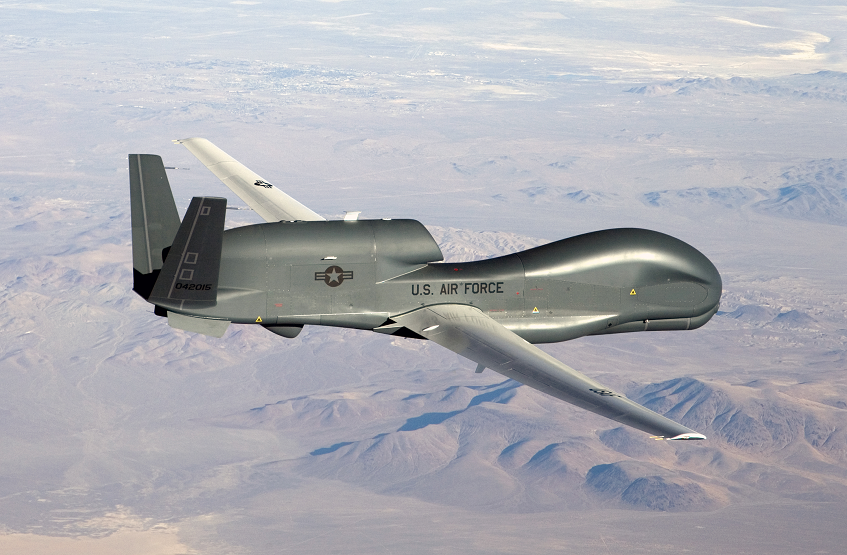This post is also available in:
 עברית (Hebrew)
עברית (Hebrew)
United States Navy officials have recently confirmed that a surveillance UAV has suffered major damage during a takeoff attempt in the Middle East.
A Navy RQ-4 Global Hawk UAV was hit by a piece of debris on its left wing. In a statement released by the United States 5th fleet, the Navy mentioned that no injuries occurred to any personnel due to the accident. “A mishap investigation is ongoing, and we therefore have no further releasable details.”
Although the Navy has not disclosed the location of the accident, Usni.org mentions that it is likely that the incident has happened in the Al Dhafra Airbase in the United Arab Emirate.
The RQ-4 Global Hawk has been around for over 20 years. It requires a three man, ground crew to operate. The aircraft can reach speeds up to 629 kilometers an hour and has a maximum altitude of 60 thousand feet. Its turbofan engine gives the aircraft a possible range of up to 22,780 kilometers. The UAV is capable of staying airborne for over 32 hours at a time.
The damage caused to the UAV has been categorized as a Class-A mishap, meaning that the expected cost to repair the damage is over $2 million dollars.
The UAV that has been damaged was one of five Broad Area Maritime Surveillance Demonstrators (BAMS-D). The $180 million dollar aircraft demonstrator is a surveillance drone that uses the RQ-4A as a testbed. The aircraft is used for high-altitude, high-endurance, maritime surveillance missions. BAMS-D in the past have provided surveillance for the Navy’s aircraft carriers in critical areas in the Persian Gulf and other “hot” maritime zones.
However after this incident, there may only be two operational BAMS-D left, since one has been shot down last June by Iranian forces and another one that has crashed in the Chesapeake Bay back in 2012.
However the BAMS program may likely replace the RQ-4A with the MQ-4C UAV. The new program is expected to reach initial operating capability by 2021.


























